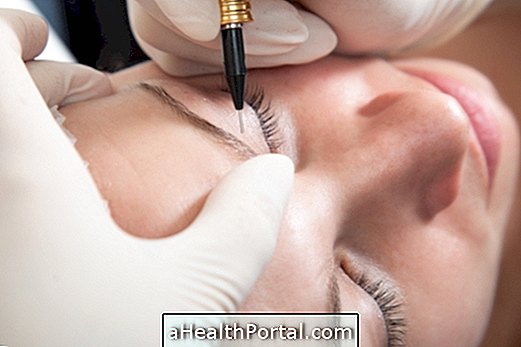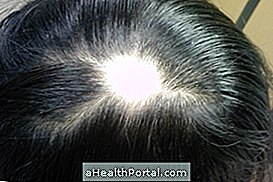Correcting flaws and improving the eyebrow design are some of the advantages of micropigmentation of eyebrows. Micropigmentation also known as permanent make-up or permanent make-up is an aesthetic treatment similar to a tattoo, in which a special paint is applied under the skin with the aid of a pen-like device.
Micropigmentation consists of the implantation of pigments in the skin, in order to improve the appearance or delineate certain regions, being a technique that can be performed not only on the eyebrows but also in the eyes or lips for example.
Types of Micropigmentation
There are two types of micropigmentation indicated for different cases, which include:
- Shadowing: indicated for cases where there are almost no wires in the eyebrow, it is necessary to draw and cover the whole extension of the eyebrow;
- Wire Wire: this type of micropigmentation is best suited for cases where there are wires in the eyebrows, only need to improve its contour, evidence its arc or plug failures.

The type of micropigmentation to be used should be indicated by the professional who does the treatment, as well as the color indicated and most natural.
Benefits of micropigmentation
In comparison to other eyebrow beautification techniques, such as brow coloring or eyebrow henna, micropigmentation has advantages which include:
- Procedure that lasts between 2 and 5 years;
- It does not hurt because local anesthesia is used;
- It covers imperfections and faults in an efficient and natural way.
Micropigmentation is indicated for those who are dissatisfied with the shape and contour of the eyebrow, and in cases where there are differences in length or obvious asymmetries between the two eyebrows. For cases where the eyebrow is weak or has few wires, eyebrow transplantation may be indicated, a definite and natural choice that fills the flaws and increases the volume of the eyebrow.
If the goal is to enhance the contours of the face, Micropigmentation can also be useful since the eyebrows value the features of the face. In addition, performing a few Exercises to sharpen the face can also be useful as they strengthen the muscles of the face, tone, drain and help disinfect.
How Micropigmentation is Made
This technique is performed using a device called a dermograph, which consists of a needle-like pens, similar to a tattoo pen, that pierce the first layer of skin by inserting pigments.
After deciding the eyebrow design and the color to be used, a local anesthetic is applied so that the procedure does not cause pain, and only after being anesthetized is the technique initiated. At the end of the procedure, a low-power laser is used on the region, which will help in healing and better fix the pigments inserted.
Depending on the type of skin and the color used, it is necessary to maintain the micropigmentation every 2 or 5 years, as the ink begins to fade.
Care after micropigmentation
During the 30 or 40 days following micropigmentation, it is very important to always keep the eyebrow area clean and disinfected. It is contraindicated to take sun or wear makeup during recovery time and until the skin is completely healed.

Over time Ink changes color?
The paint chosen to perform the micropigmentation should always take into account the skin color, the eyebrow wires and the color of the hair, so that if chosen correctly it will only lighten and fade over time.
It is expected that when a pigment is applied on the skin it will change slightly in color, becoming a little darker in the months following the application and clearer with the passage of time.
Is Micropigmentation Tattooing?
Nowadays the micropigmentation is not a tattoo, since the needles used during the procedure do not penetrate to the 3 layer of the skin as it happens in the cases of the tattoo. Thus, micropigmentation does not leave irreversible marks, because the ink fades after 2 to 5 years, and it is not necessary to remove it by laser.



















